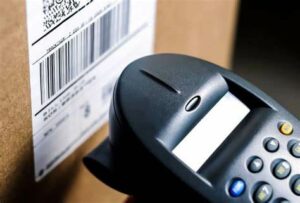Although we all have heard the terms SKU and UPC, most people don’t know the subtle differences. Many people confuse these terms by using them incorrectly or interchangeably.
One thing unites UPCs, SKUs, and barcodes: They all serve the same purpose of identifying and tracking things. Each can be used for different purposes and in different ways. These distinctions are crucial if you’re in manufacturing, purchasing, fulfilling, or shipping orders. It’s high time to clarify! We will give you the SKU, UPC, and barcode definitions and explain how they are used.
An SKU is a shorthand for “stock keeping units,” and it’s a unique number combination that retailers use to identify and track their products. It is usually eight characters in length and comprises numbers and letters. Retailers use different SKU numbers for different products depending on their features, such as price, manufacturer, and color.
SKUs are unique to a company and can be tailored to suit the needs of vendors and customers. They allow retailers to keep track of the products that have been shipped from the supplier to their customers.
You may be a veteran retailer, a new business owner with limited stock, or a large inventory.

A barcode is a way to represent data in a machine-readable, visual format. Barcodes can be used outside by any business in the retail supply chain. This includes wholesalers, retailers, and resellers. Barcodes were traditionally used to represent data by changing the spacings and widths of parallel lines. Some variants have used rectangles, dots, and hexagons in recent years.
The barcode can be scanned using a barcode reader to reveal the encoded data. Barcodes can quickly convey large amounts of information in a limited space. The more information a barcode can store, the larger it is.
Barcode formats are called symbologies. There are as many as 30 types available, some of which have been developed for specific industries. These are the two most common types of barcode symbologies.
One-dimensional barcodes are also known as linear barcodes. You can further break down one-dimensional barcodes into
One-dimensional numeric barcodes are the most popular type of barcode. Using numbers and bars is also a common type. You will most often see the UPC (or Universal Product Code) 12-digit barcode on North American products. Manufacturers outside North America use a 13-digit barcode called an EAN or IAN (European Article Number). Other numeric barcodes with varying lengths have been standardized for certain industries, such as POSTNET, used by the US Postal Service.
One-dimensional Barcodes are made up of numbers, letters, and bars and can encode more information. They are used in libraries, grocery stores, and automobile and defense industries.
Two-dimensional Barcodes are rectangular or square-shaped images that are made up of dots-filled cells. They don’t contain numbers or letters visible. These barcodes can contain thousands of characters. A QR code is the most popular type of 2D barcode. A 2D barcode is likely to be found on the back side of your driver’s license. Datamatrix bar codes are small 2D codes often used to identify small electronic components.
Barcodes are used in various ways by businesses, not just retail. New barcode technologies are constantly being developed. Depending on the industry, how much information is required, and the space available for printing it, the type of barcode used will depend on what it contains. Below are some examples of barcodes:

Barcodes used in E-commerce and Retail
Most e-commerce/retail supply chain barcodes are linear, one-dimensional numeric varieties. They are used for two primary purposes: shipping barcodes and product barcodes.
UPC (or Universal Product Code) is a 12-digit symbology often used in conjunction with Global Trade Item Numbers. GTINs can be purchased from GS1. These unique identification numbers are created and sold by GS1. GTINs are unique identifiers assigned to products and cannot be used again. GS1 maintains a database of all GTINs, which can be used for verification.
GTINs can be purchased individually by brands for small quantities of products or in bulk to create UPC barcodes. A unique company prefix is assigned to the brand for bulk purchases. This is the number of GTINs they buy. The remaining numbers are the item number and a check digit. This serves as verification that all numbers were entered correctly when the barcode scans. Once the brand has its GTIN numbers, it can link them to each product using numbers entered in its POS or inventory management system (IMS). Any barcode printer can provide barcode art. E-commerce platforms like Shopify and Square can generate UPC barcodes using GTINs. Full-service 3PLs such as ShipMonk can also produce them. You can ask your supplier or manufacturer to print the UPCs directly onto your packaging or hang tags.
GTINs are used in UPCs to ensure universal compatibility with scanners for warehouse receiving and storage. Third-party logistics providers can also use them for order fulfillment returns and receipts. GTINs can be used to identify a product in an online search. Most major retailers and marketplaces require them to verify the authenticity of a product and ensure compatibility with their scanning systems.
GTINs/UPCs are not able to encode product information like price or color, unlike SKUs. They identify the manufacturer as well as the item or product number. The retailer’s POS system stores specific details about each product. The UPC can be scanned at POS, and all parties are retrieved based on the item number. This allows retailers to set their prices for each item. Most retailers assign a UPC and SKU to the same product to track sales and manage inventory internally and externally.
One last note about UPCs. It is redundant to call it a UPC because the C stands for code. The GTIN can be referred to as a UPC number or the barcode section as a UPC barcode. However, those well versed in the subject matter will not refer to it as a UPC. It is simply a UPC.

Although UPCs and SKUs may look identical — both seem to be the same alphanumeric codes — they can be used in two different ways. Here is a breakdown.
| SKU (Stock Keeping Unit) | UPC (Universal Product Code) |
| Internal | Universal |
| Between eight and 12 characters | Always 12 characters |
| Identifies product traits | Identifies manufacturer and item |
| Alphanumeric | Numeric |
| Retailers determine SKU architecture | Issued by the Global Standards Organization |
A barcode is a series of black lines that retailers scan to complete a customer’s order. The term barcode often replaces UPC. This means that they can be interchangeable.
SKU numbers are unique to a seller or business. Barcodes can be assigned to similar products, regardless of where they’re sold. SKUs can also accompany barcodes.

Last updated: 2025-05-06

Last updated: 2025-04-01

Last updated: 2025-03-03

Last updated: 2025-02-05